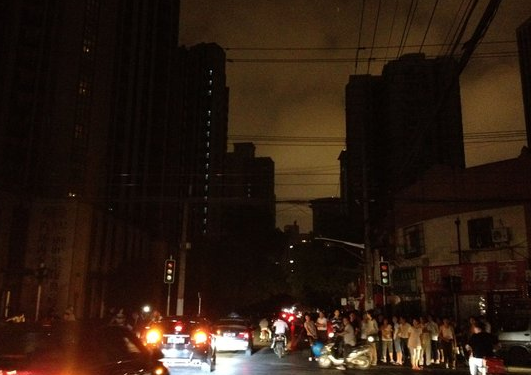New Delhi: China’s energy crisis has created ripe conditions for the smuggling of coal from North Korea. North Korean trading companies are defying international nuclear sanctions to sell coal to energy-hungry China.
The coal is being smuggled small ships and offloaded at sea. The immediate provocation for this smuggling arises from the electricity crisis in China which has forced factories to reduce operations, power consumption, and in some provinces led to outright blackouts.
The immediate cause is the shortage in coal that is a result of a reduction in coal imports and decreased domestic production, as China balances its growing energy demand with a desire to curb pollution and reduce carbon emissions.
China is still highly dependent on coal, which provides 70 per cent of the country’s power generation.
However, China’s energy crisis cannot be solved through the coal smuggling from North Korea, which is a microcosm of the larger malaise afflicting China’s coal industry.
Incidents of coal smuggling from North Korea can be traced to 2019. In November 2020, International Maritime Organization data revealed that a spate of fatal maritime incidents involving North Korean vessels had occurred.
Analysis of this data showed that several of these ships that suffered accidents were engaged in coal smuggling. The vessels’ failure to use tracking systems, a standard safety procedure, was one of the main reasons for the accidents and highlighted the risk North Korea imposes on its fleet and those operating it in pursuit of illegal coal revenues.
Meanwhile, provincial governments in China have encouraged more coal imports from Russia, Indonesia, and Kazakhstan to resolve domestic market shortages. Officials in Jilin, a province in north-east China, last month ordered more shipments from Russia, Indonesia, and Mongolia. The sudden increase in imports in September was a sign that China was turning to overseas coal in a bid to lower domestic prices, which had reached Rmb 2,000 (US$ 310) a tonne. High prices are one of the reasons for the power crisis, but imported coal is also not very cheap and is closer to Rmb 1,500 or Rmb 1,600.
This is one of the reasons why North Korean companies are smuggling coal to Beijing amidst the ongoing power crisis in China. China coal futures traded on the Zhengzhou commodities exchange have also been surging and touched Rmb 1,640 per tonne on 13 October, a record high. Flooding in Indonesia and the pandemic, led China to tighten border controls, disrupting imports. China had also placed an informal ban on Australian coal last year after Canberra called for an inquiry into the pandemic’s origins.
A leading media outlet reported (October 15, 2021) that shortages of coal, high fuel prices and the post-pandemic demand boom had sparked huge power shortages. Rationing has already been in put in place in at least 17 (see China Rationing map below) of China’s more than 30 regions, since September 2021, forcing several factories to suspend production, disrupting supply chains.
With temperatures across China starting to dip, many provinces, including Jilin, Heilongjiang and Liaoning, have started winter heating based on coal, to cope with the colder weather. That is why September 2021 witnessed an increase in imports of coal and natural gas, as China had to deal with the energy crisis.
Estimates are that China imported 32.9m tonnes of coal, 76 per cent more than it did during the same month last year. Imports of natural gas rose by 23 per cent to 10.6m tonnes compared to the previous year.
Factories and businesses have been forced to ration power use and some households have experienced electricity outages after a power crunch hit more than twenty Chinese provinces last month. However, some analysts trace the crisis back to a string of policy mis-steps and poorly thought-out market interventions after the start of the pandemic.
Significantly, coal accounts for most Chinese energy consumption but curbs have been placed on how much producers could charge making it financially unviable for many electricity companies that operate coal-fired power plants. It was only after the energy crunch that China allowed companies to charge more and urged domestic suppliers (responsible for 90 per cent of China’s coal supplies) to increase production and reopen mines.
It is likely that coal exports will remain high from Indonesia for the rest of the year. As of now China has not lifted the unofficial ban of Australian coal. They are also facing a difficulty in fulfilling the coal demand of their electricity sector as China’s economic activities continue to grow. Before the crisis, Chinese provinces had also been attempting to reduce power use.
Statistics in Table I below however, shows that globally Chinese demand for coal has been increasing and projected demand by 2023 will be around the same as the amount used in 2017.
China’s plans to tackle the crisis by targeting the dual high sectors, essentially those whose energy consumption and carbon emissions are very high.
These sectors will not see any guard-rails on the prices they pay, consequently, all the cost of balancing utilities’ books will fall on their shoulders.
This will reduce the demand pressure on the grid and encourage inefficient users to upgrade to add more value. These new regulations have come into place under the revised rules issued by the National Development and Reform Commission of China.
However, under these rules residential and agricultural consumers will still buy power at fixed tariffs and smaller users will see electricity costs fluctuate within a band.
To tackle the crisis, Provinces have also been required to meet strict targets under China’s “dual control” strategy, a policy intended to lower consumption and intensity of use. The policy contributed to a year-on-year decline in imports of other commodities, including crude oil, iron ore and copper in September.
The impact of China’s energy crisis domestically will be felt worldwide. In recent times, the world has become hooked on cheap Chinese power for manufacturing a host of its goods.
About half of all metal is produced in China and nearly a fifth of all oil is refined there. Energy-hungry products from aluminium to solar panels to Bitcoin depend on the country’s low industrial power tariffs to keep their own prices down.
With electricity costs for “dual-high” industries set to rise, we may not have seen the end of the inflationary pressures flowing through the global economy.
IANS






































